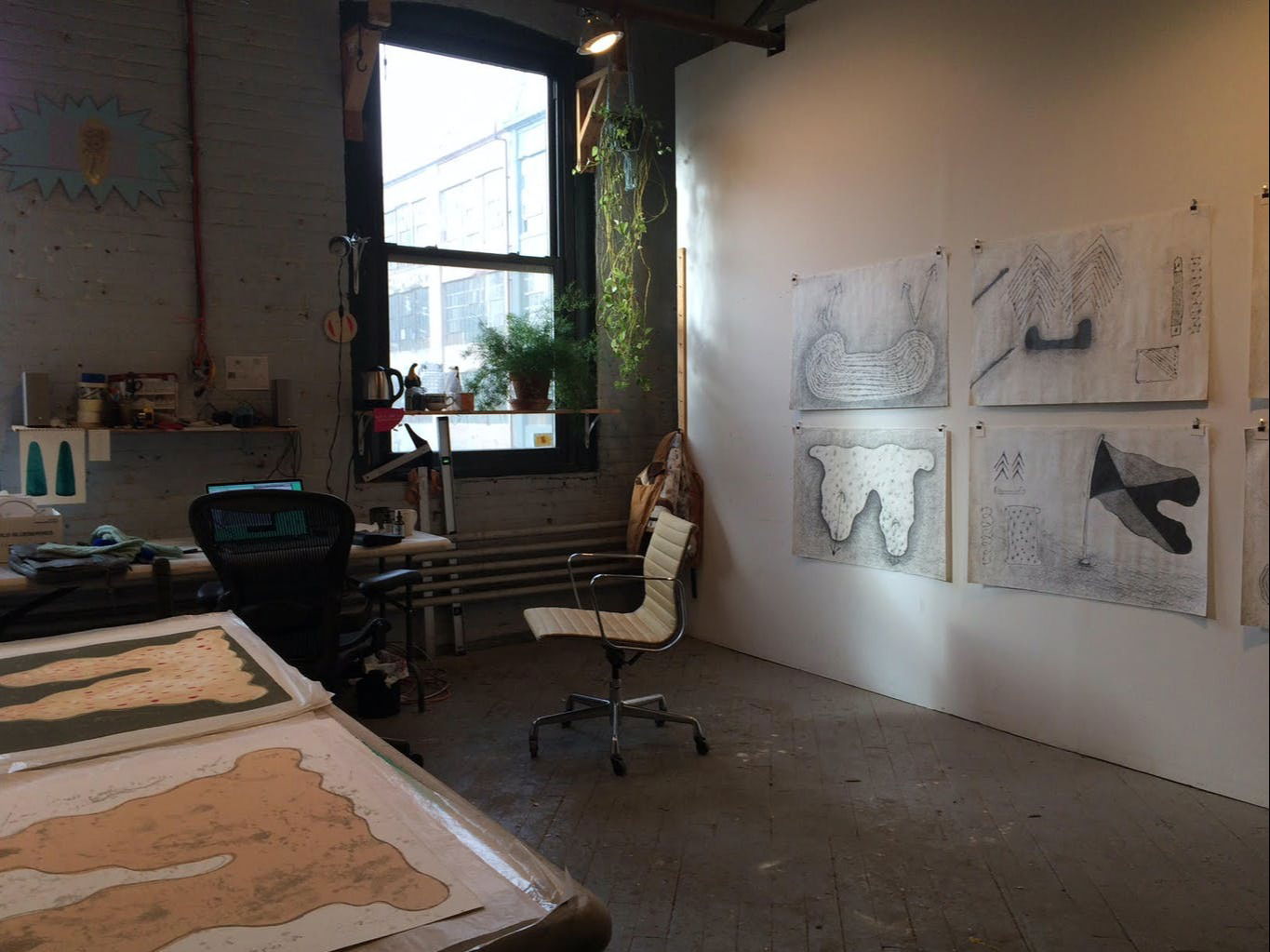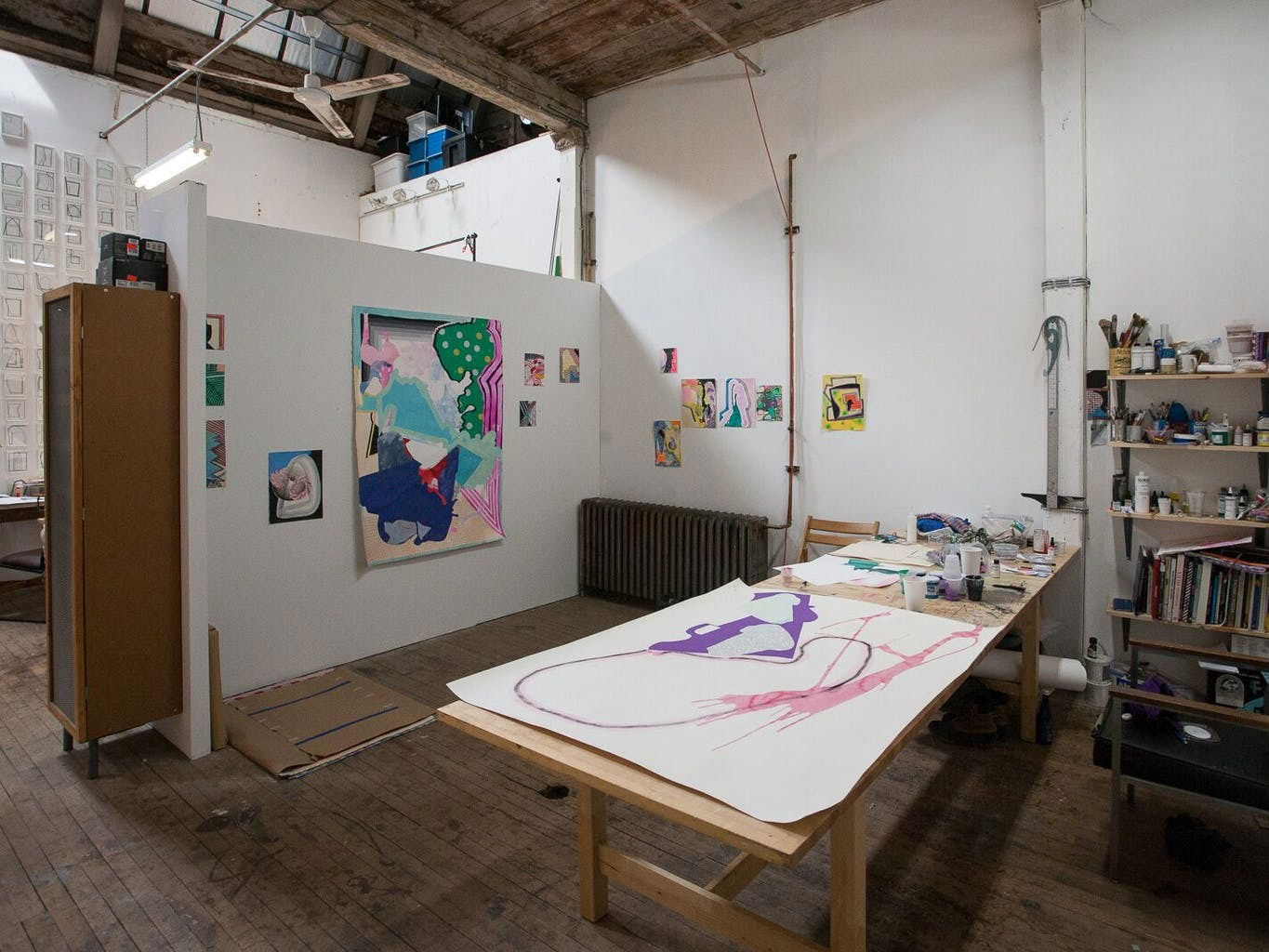

From the earliest days of Listings Project, helping artists find and share art studio space has been central to our work. As an artist in New York City I know first hand how challenging it can be to find adequate space to work and thrive in. In fact, Listings Project began with my own search for space. And I’ve used the list many times myself over the last twenty years to find and share art studio space.
For artists, even those working in portable mediums, having an art space to do creative work is often essential. For many, an outside-the-home art studio space is ideal for creative productivity. Alison, lister, writer, and book editor transitioned to an art studio space after 20 years working from home. She says, “The difference in my productivity, creativity, and mood is night and day. Even if I was home alone, being in my living space while trying to work always meant that mentally I was somehow ‘off duty’ even though, work-wise, I was most definitely on duty.”
Of course, renting an art studio separate from your home can be expensive, especially in already pricey rental markets. That being said, if you’re willing to be flexible and creative in your search, you may still be able to find the perfect place to make your art. To that end, we’d like to share a few things to consider as you begin your search for an art studio space.

Photo by Kerry Downey
Make a list of your requirements
You should begin by thinking through the way you work to create a list of must-have and nice-to-have features. In particular, you’ll want to think through the specific requirements of the mediums you work in. Do you work with chemicals that offgas? You may need windows that can be opened and a solid ventilation system. Are you a digital artist? Maybe high quality wifi is essential for you. Do you require a soundproof space? A freight elevator for moving materials? Abundant natural light? What times and days of the week will you need access to the space? Do you need reinforced floors for heavy equipment? A ventilation system? This list will help guide you as you search for an art studio space.

Photo by Adi Shniderman
Think about the location and surrounding area
The commute to your art studio space can have a dramatic impact on how often you find yourself making art in your space, and how much time you feel you can spend in your space. So consider how far you’re willing to travel. Ideally you’ll be able to find a space in your own neighborhood, but if you have to look farther afield, make sure to consider how you’ll get to your space. Is there reliable public transportation nearby? Will there be significant traffic during the times you plan to travel to your space? Is there a community of artists in the space or nearby? Are there places to have lunch or a meeting? Is there a park or other outdoor space nearby? Will the location be easily accessible for curators or other visitors?
Consider sharing a space
Affordable art studio space, especially in expensive and rapidly gentrifying cities, can be hard to come by. Would you be willing to share an art studio space with someone? If so, it’s worth taking the time to consider what kinds of art practices would be compatible with your needs. If you require an immaculate workspace, you probably don’t want to share a space with an installation artist or a painter who’s working in airbrush. Do you have specific days of the week you’d need the space to yourself? Or are you comfortable working with another person present? With enough forethought and planning, you may be able to significantly decrease the cost of renting an art studio space by sharing with another, compatible artist.

Photo by Elæ Moss
Check in with yourself about how a space feels
As you begin visiting spaces, make sure to really check in with yourself about how it feels to be in the space. Does it feel like an environment you can create in? Use your sense to evaluate the space. Ideally this will be a place where you are your most creative and productive, a place where you can really invest yourself in your work. Make sure you talk with the landlord or the artist who is leasing the space to make sure it meets your list of requirements as well. They may also be able to tell you more about the events in the neighborhood, what kinds of artists are working in the space, to help you get a sense for what it would be like to make your art there.
Make sure you have a lease and read it carefully
In the Spring of 2020, a group of artists were suddenly evicted from their art studio spaces in Gowanus. Unfortunately, it is relatively common for artists to be abruptly removed or evicted from spaces where they are making art. That’s why it’s critical that you have a written lease and that you read it carefully before signing it. If you are subletting a space, make sure you understand what the subletter’s arrangement is with the landlord they are renting from. If possible, ask to see a copy of their lease as well. Making sure you have a written lease that you’ve read and understand will help prevent unexpected evictions and disruptions to your work.
Feature image by Garett Nelson
Stephanie is an artist, entrepreneur and Founder / CEO of Listings Project. She creates communities of collective care. With over three decades of experience community building, the largest community she has created to date is Listings Project. As a social practice artist, she creates with a community as opposed to an audience. She has exhibited at: MoMA, MASS MoCA, MoMA/P.S. 1, Studio Museum in Harlem, Queens Museum of Art, Bronx Museum of the Arts, Project Row Houses, to name a few. As an educator and leader she has held positions at museums, public art institutions, and schools and universities. Lean more about Stephanie at: stephaniediamond.com